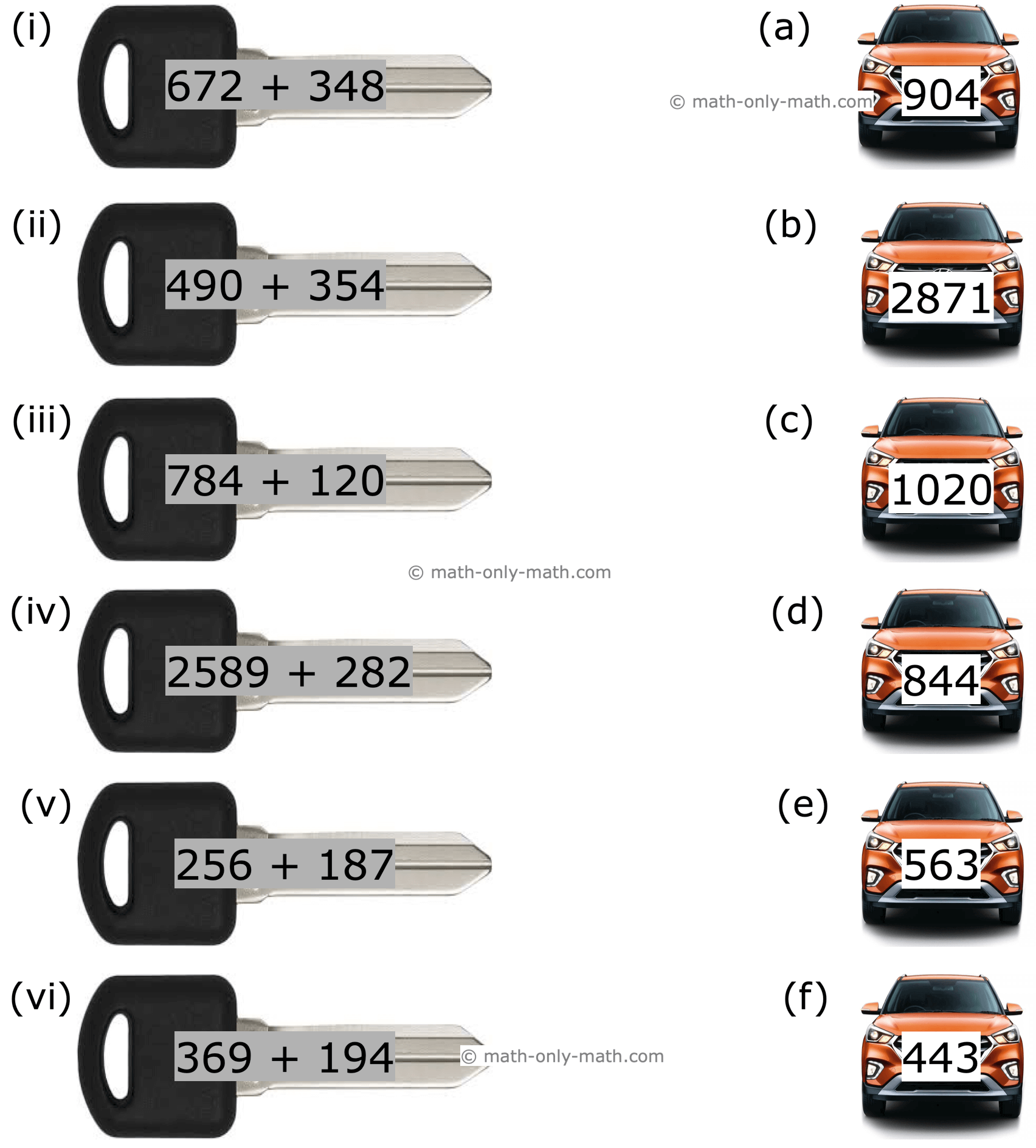Equiradical Surds
If two or more surds are of the same order they are said to be equiradical.
Surds are not equiradical when their surd indices are different.
Thus, √5, √7, 2√5, √x and 10^1/2 are equiradical surds.
But √2, ∛7, ∜6 and 9^2/5 are not equiradical.
Note: Non-equiradical surds can be reduced to equiradical surds.
Thus, non-equiradical surds √3, ∛3, ∜3 become 12√729, 12√81, 12√27 respectively when they are reduced to equiradical surds.
If x is a positive integer with nth root, then n√x is a surd of nth order when the value of n√x is irrational. In n√x expression n is the order of surd and x is called as radicand. For example ∛7 is surd of order 3.
When two or more surds have the same order, they called as Equiradical Surds. For example √2, √3, √5, √7, √x are the surds of order 2. So these surds are equiradical.
When two or more surds don’t have the same order they are called non-equiradical surds. For example√5, √7, ∛10, ∛17, ∜9, ∜20 these surds are non-equiradical surds as they have different orders as 2,3 and 4.
Non-equiradical surds can be expressed in the form of equiradical surds. For example √2, ∛3 and ∜5 are non-equiradical surds with order 2,3 and 4. If we can change the indices of surds such that all the surds can be converted in to a same order, then non-equiradical surds can be expressed in the form of equiradical surds. For this case with orders of 2, 3, 4 we can change surds in the a same order if we change it to the LCM (Lowest Common Multiple) of order and that is 12.
Changing the order of first surd from 2 to 12, √2 = 21/2 = 26/123 = 641/12 = 12√64
Changing the order of second surd from 3 to 12, ∛3 = 31/3 = 3 4/12 = 811/12 = 12√81
Changing the order of third surd from 4 to 12, ∜5 = 51/4 = 53/12 = 1251/12 = 12√125
So √2, ∛3 and ∜5 are the non-equiradical surds which can be expressed in the form of equiradical surds as 12√64, 12√81, 12√125
In two equiradical surds n√x and n√y, n√x > n√y when x > y. For example ∛7 and ∛5 are the two equiradical surds, as 7 > 5, so ∛7 > ∛5. The same comparison can done for more than two equiradical surds also.
For non-equiradical surds if we change it to the form of equiradical surds, then similarly we can compare the values of surds like it is compared for the case of two equiradical numbers. For example ∛7 and ∜5 are two non-equiradical surds. If we need find out ∛7 > ∜5 or ∜5 > ∛7, then we first need to express the surds in to equiradical surds. As the orders of the surds are 3 and 4, LCM of 3 and 4 is 12, so if we make the surds in order 12 we can find out which one is greater value.
∛7 = 71/3 = 74/12 = 24011/12 = 12√2401
∜5 = 51/4 = 53/12 = 1251/12 = 12√125
As 2401 > 125, so ∛7 > ∜5.
Solved Example:
Arrange the surds in descending order.
√10, ∛25, ∜40
Solution:
√10, ∛25, ∜40
Surds are in the order of 2, 3, and 4. So the surds are non-equiradical surds. To arrange the surds in descending order, the surds need to be expressed in the form of equiradical surds. As the LCM of 2, 3 and 4 is 12, so the order of the equiradical surds will be 12.
√10 = 101/2 = 106/12 = 10000001/12
= 12√1000000
∛25 = 251/3 = 254/12 = 3906251/12 = 12√390625
∜40 = 401/4 = 403/12 = 640001/12
= 12√64000
As 1000000 > 390625 > 64000, the ascending order will be √10, ∛25, ∜40.
11 and 12 Grade Math
From Equiradical Surds to HOME PAGE
Didn't find what you were looking for? Or want to know more information about Math Only Math. Use this Google Search to find what you need.
Recent Articles
-
Divide by Repeated Subtraction | Division as Repeated Subtraction
Jan 20, 25 03:34 PM
How to divide by repeated subtraction? We will learn how to find the quotient and remainder by the method of repeated subtraction a division problem may be solved. -
3rd Grade Multiplication Worksheet | Grade 3 Multiplication Questions
Jan 20, 25 02:31 PM
In 3rd Grade Multiplication Worksheet we will solve how to multiply 2-digit number by 1-digit number without regrouping, multiply 2-digit number by 1-digit number with regrouping, multiply 3-digit num… -
3rd Grade Math Worksheets |3rd Grade Math Sheets|3rd Grade Math Lesson
Jan 20, 25 12:28 AM
3rd grade math worksheets is carefully planned and thoughtfully presented on mathematics for the students. Teachers and parents can also follow the worksheets to guide the students. -
3rd Grade Multiplication Word Problems Worksheet With Answers | Math
Jan 19, 25 11:29 PM
In 3rd Grade Multiplication Word Problems Worksheet we will solve different types of problems on multiplication, multiplication word problems on 3-digits number by 1-digit number and multiplication wo… -
Multiplying 2-Digit Numbers by 2-Digit Numbers |Multiplying by 2-Digit
Jan 19, 25 02:34 AM
We will learn how to multiply 2-digit numbers by 2-digit numbers.





New! Comments
Have your say about what you just read! Leave me a comment in the box below. Ask a Question or Answer a Question.